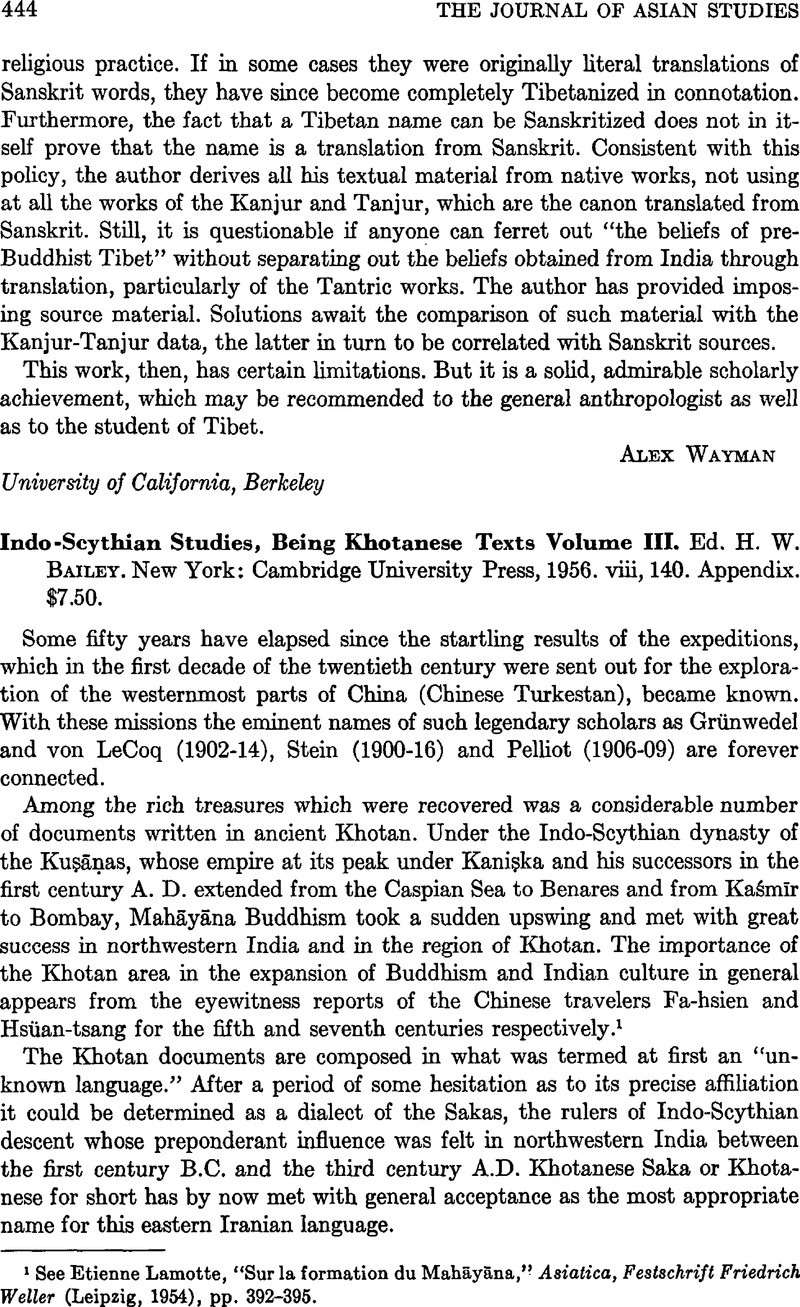No CrossRef data available.
Published online by Cambridge University Press: 23 March 2011

1 See Lamotte, Etienne, “Sur la formation du Mahāyāna,” Asiatica, Festschrift Friedrich Weller (Leipzig, 1954), pp. 392–395.Google Scholar
2 (1) Khotanese Texts I (Cambridge, 1945) (KhT I)Google Scholar; (2) Khotanese Buddhist Texts (London, 1951) (KhBT)Google Scholar; (3) Indo-Scythian Studies, Being Khotanese Texts Volume II (Cambridge, 1954)Google Scholar (KhT II).
3 Since references are lacking they are given here: text No. 2 was published previously by Bailey, H. W., BSOS, VIII (1935–1937), 923–930Google Scholar; No. 6 (Vajracchedikā) by Konow, Sten in Manuscript Remains of Buddhist Literature Found in Eastern Turkestan, ed. Hoernle, A. F. Rudolf, I (Oxford, 1916), 214–288Google Scholar; Nos. 26, 27, 28 (Rāma story) by Bailey, H. W., BSOAS, X (1939–1942), 365–376, 559–598Google Scholar; No. 33 (Turkish-Khotanese vocabulary) by Bailey, H. W., BSOAS, XI (1943–1946), 290–296Google Scholar; parts of Nos. 18, 34, 42, 45 by Bailey, H. W., BSOAS, X, 892–895, 904–907Google Scholar; No. 52 (Sanskrit-Khotanese bilingual) by Bailey, H. W., BSOS, IX (1937–1939), 521–543.Google Scholar
4 The popularity of Indian medicine (āyurveda) is apparent from the translation of Indian medical texts into Khotanese (KhT I), Kuchean (Filliozat, J., Fragments de textes kouchéens de médecine et de magie, Paris, 1948)Google Scholar and Uigur Turkish (Rachmati, G. R., “Zur Heilkunde der Uiguren,” I–II, SPAW, 1930, 1932).Google Scholar
5 See Bailey, H. W., BSOAS, XI, 769 and XIII, 395.Google Scholar
6 Most of the documents are to be found in KhT II.